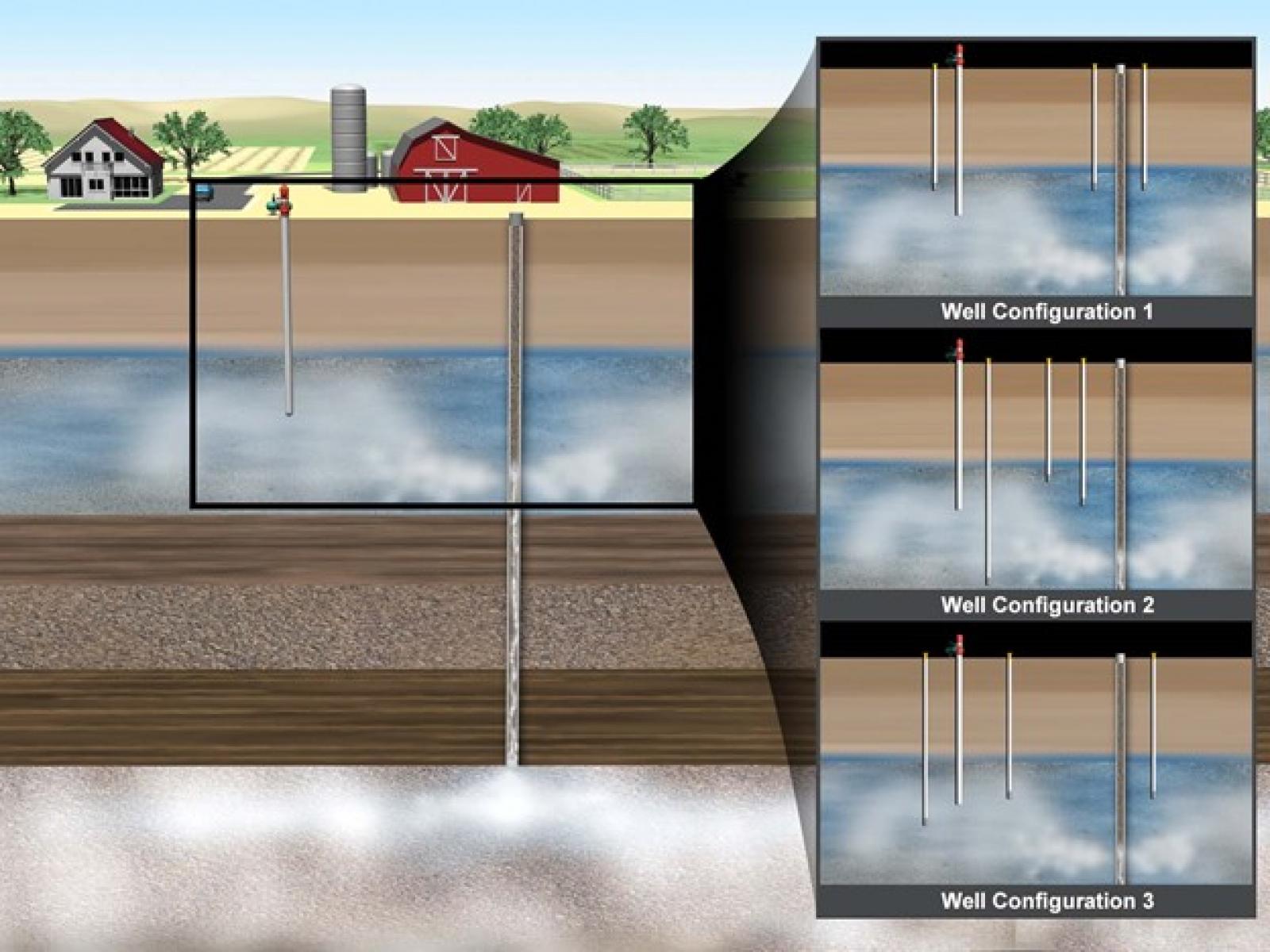Designs for Risk Evaluation and Management (DREAM)
Designs for Risk Evaluation and Management (DREAM)
Designs for Risk Evaluation and Management, or DREAM, is a tool that generates and optimizes monitoring programs for detecting potential leaks from geological carbon storage. DREAM analyzes outputs from full-physics simulators, geophysical models, or reduced order models and uses probabilistic and heuristic algorithms to identify the best monitoring network based on user-defined objectives and constraints.

Conceptual representation of a theoretical DREAM application to design a monitoring campaign.








